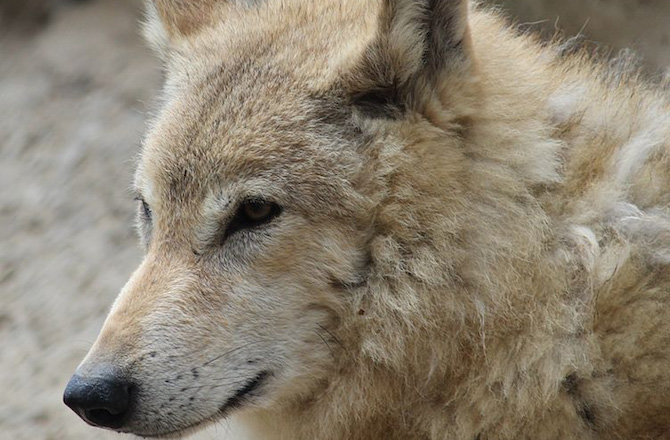
In addition to pinpointing the place and time for the earliest dog domestication, the new study, published in the journal Cell Research, found that the first domesticated dogs descended from grey wolves that likely came from China.
The research, conducted by an international team, further determined that dogs began to migrate out of East Asia and towards the Middle East and Africa 15,000 years ago. They then reached Europe in large numbers approximately 10,000 years ago. It appears that the dogs self-initiated the moves.
"For some reason, dogs stayed around East Asia for a long time before their migration out of Asia," senior author Ya-Ping Zhang of the Chinese Academy of Sciences Kunming Institute of Zoology told Discovery News. "We speculated that the glacial period might have been the environmental factor that prevented dogs from migrating out of Asia."
For the study, Zhang, Peter Savolainen of the KTH- Royal Institute of Technology in Sweden, and their colleagues sequenced the genomes of 58 canines, including grey wolves, indigenous dogs from Southeast and Northeast Asia, village dogs from Nigeria, and numerous dog breeds from around the world.
Based on the DNA analysis, they found that dogs from Southeast Asia have a higher degree of genetic diversity than all other dogs. Such genetic diversity is an indicator of where a species originates. Additionally, these dogs were most closely related to grey wolves.
DNA remains a focus for research on the history of dogs because the fossil record for dogs in East Asia is so poor. Zhang said that the warm, humid conditions of the region are not favorable for preserving fossils. Also, there have not been many targeted excavations in the region.
"Yet another unfavorable detail is that the soil in southern East Asia is mostly quite acidic, pH often below 5, which makes bones dissolve within a few hundred years," Savolainen said.
It could then be that no remains still exist for the world's first major population of domesticated dogs.
It is often said that cats, loving the comforts provided by humans, domesticated themselves. A subset of wolves might have done something similar.
As Zhang said, "dogs at the time of migration out of East Asia might still have been very loosely engaged with humans. Dogs might have followed existing human settlements and spread as scavengers living around human beings."
Just as humans travel back and forth, it appears that some of the earliest dogs did too. The DNA evidence suggests that dogs from a group that migrated out of southern East Asia later travelled back, but this time toward northern China. There, the dogs interbred with local populations before spreading to the Americas, according to the new research.
Intriguingly, two excavated early dog skulls, analyzed by other scientists, date to 33,000 years ago. One was found in a cave in the Altai Mountains of Siberia. Another was discovered in a cave in Belgium.
"Both the Belgian find and the Siberian find are domesticated species based on morphological characteristics," said Greg Hodgins, a researcher at the University of Arizona's Accelerator Mass Spectrometry Laboratory.
Several possibilities could explain both the DNA evidence and the archaeological finds. One is that humans were migrating frequently and over long distances 33,000 years ago, and dogs followed. The second, according to Hodgins, is that dog domestication happened repeatedly throughout early human history at different geographical locations. That would mean modern dogs have multiple ancestors, however, rather than a single common ancestor, as the new research indicates.
Dogs are one of the most studied animals, and yet even with all of the new findings, many unsolved mysteries about the origins of man's best friend still remain.



The world changed 41,000 y ago. The Phlegrean field volcanoes in Italy blew creating the largest blast ever in the Northern Hemisphere. [Link]
40,000 y ago the Earth experienced a global magnetic reversal known as the Les Champs event. I suspect not only cattle but dogs made their appearance in tamed form at this time.
Science is only now looking at brain damage from concussion but is it possible that the volcanic explosions created world-wide resonances that damaged the brain? Maybe we were a smarter version and like the dogs and cattle are now 'tamed.'